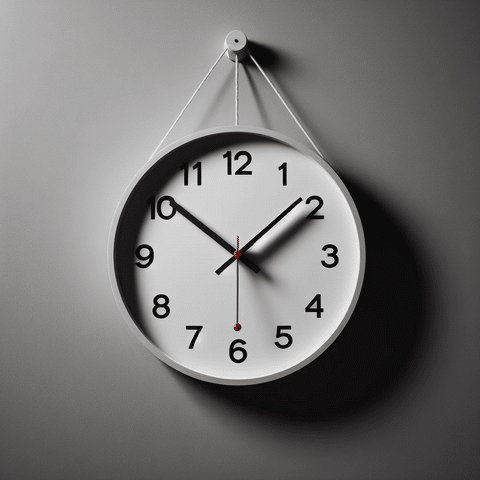Spinal injuries can significantly impact your quality of life, hindering your ability to work and engage in daily activities. If you’ve sustained such an injury, whether at work, in a car accident, or in a public setting, you might be eligible for compensation. To maximise your chances of successfully claiming what you’re owed, consider consulting with a committed personal injury lawyer in Melbourne. At Maxiom, our experts are dedicated to ensuring you receive the compensation you are entitled to.
To help you get started, we have detailed the process of claiming spinal injury compensation, including the types of injuries covered, how to prove your case, the average payout amounts, and the steps involved in making a claim. We’ll also discuss the time limits for applying for compensation and the different avenues through which you can claim, such as TAC, Workcover, public liability, and medical negligence.
Types of Spinal Injuries
Spinal injuries can impact different areas of the spine, such as the bones, joints, connective tissue, muscles, and nerves.
The most common types of spinal injuries include the following:
- Sprains and strains: These are common soft tissue injuries that can result from sudden twisting or lifting heavy objects.
- Herniated disks: When the soft, jelly-like center of a spinal disk protrudes through a tear in the outer layer, it can compress nerves and cause pain.
- Fractured vertebrae: A fracture in the spinal bones can occur due to trauma, such as a fall or car accident.
- Sciatica: This condition arises when the sciatic nerve, which runs from the lower spine down the legs, becomes compressed or irritated, leading to pain, tingling, and numbness.
- Tetraplegia: Also known as quadriplegia, is a condition resulting from a spinal cord injury that leads to paralysis in all four limbs. This paralysis occurs due to damage to the cervical spine, which is the uppermost part of the spinal cord.
Can You Claim Compensation for a Spinal Injury?

Yes, you may be eligible for compensation if you have sustained a spinal injury in the following circumstances:
- Work-related spinal injuries: If you have suffered an injury at work, whether due to a specific incident or as a result of repetitive strain, you may be entitled to workers’ compensation. This compensation can cover medical expenses, lost wages, rehabilitation costs, and lump sum payments for permanent impairment. To navigate the complexities of claiming these benefits, consulting with experienced workers’ compensation lawyers in Melbourne can be crucial. They can provide expert advice and representation to ensure you receive the full compensation you’re entitled to.
- Motor vehicle accidents: If you have been involved in a car accident, whether as a driver, passenger, pedestrian, cyclist, or motorcycle rider, and have sustained a spinal injury, you may be able to claim compensation. This can include coverage for medical treatment, income replacement, rehabilitation, and pain and suffering. To make sure you get the compensation you deserve, it’s important to get help from experienced road accident injury lawyers in Melbourne. They have the know-how and expertise to guide you through the claims process with ease.
- Public place accidents: If your spinal injury occurred in a public place, such as a supermarket, office building, or park, and was caused by the negligence of the property owner or occupier, you may be eligible for a public liability claim. This can provide compensation for medical expenses, loss of income, and pain and suffering. Getting advice from public liability lawyers can be a smart move. They’re experts in this area and can guide you on how to go about your claim to ensure you receive the support and compensation you need.
It’s important to note that if your spine injury prevents you from returning to work in your trained job, you may also be eligible for a total and permanent disability (TPD) lump sum payment through your superannuation fund or disability benefits.
Proving Your Spinal Injury Case
To successfully claim compensation for a spinal injury, you need to provide evidence that demonstrates the cause and extent of your injury. Here are some steps you can take to strengthen your case:
- Medical assessment: Consult with a doctor who can assess your spinal injury and provide a diagnosis. They may ask about the circumstances of your injury, conduct a physical examination, and order imaging tests, such as X-rays or an MRI scan.
- Gather medical records: Collect all relevant medical records, including doctor’s reports, specialist opinions, and imaging results. These documents will support your claim and provide evidence of the extent of your injury.
- Document your symptoms: Keep a detailed record of your symptoms, including the location and intensity of pain, limitations in movement, and any associated symptoms like numbness or tingling. This information will help support your claim and demonstrate the impact of your injury on your daily life.
- Collect witness statements: If there were witnesses to the accident or incident that caused your spine injury, obtain their statements. These statements can corroborate your version of events and strengthen your case.
- Engage a personal injury lawyer: It’s advisable to seek legal representation from one of our experienced lawyers, that specialise in injury claims. We will guide you through the claims process, ensure you meet all necessary deadlines, and advocate for your rights.
Average Payout for a Spinal Injury
The amount of compensation you may receive for a spinal injury can vary depending on factors such as the severity of your injury, the impact on your ability to work, and the extent of your medical expenses. While there is no official data for the average payout, we can provide some case studies examples to give you an idea of potential compensation amounts:
- Case Study 1: Work-related spine injury: Peter, a builder, suffered a serious injury when a colleague accidentally dropped a large steel beam on him. He required fusion surgery and was unable to return to his previous job. With the help of a personal injury lawyer from Maxiom, Peter can receive a lump sum payout for permanent impairment, as well as additional compensation for past and future economic loss. His total injury payout amounted to hundreds of thousands of dollars.
- Case Study 2: Public place accident: Carlos slipped on a wet floor at a fast-food restaurant that failed to display warning signs. He sustained a spine injury and experienced significant pain and limitations. Through a public liability claim, Carlos can receive a lump sum settlement that covers not only economic loss but also treatment needs, domestic assistance, and compensation for pain and suffering. His total spinal injury compensation payout was well into the hundreds of thousands of dollars.
It’s important to remember that each case is unique, and the compensation amount will depend on the individual circumstances. Consulting with a personal injury lawyer can provide a more accurate assessment of your potential payout.
Time Limitations for Making a Spine Injury Claim

In Victoria, it is essential for a plaintiff to present supporting evidence when filing a public liability claim. This involves providing specific details regarding the incident, such as the exact times, dates, addresses, witness information, and any other relevant particulars.
To strengthen the claim, photographs and videos can be valuable pieces of evidence, especially if they show contemporaneous images of injuries like cuts and bruises.
The following categories of evidence are typically significant in a public liability claim:
- Proof of financial loss resulting from the injury, which may include payslips and income tax returns.
- Evidence indicating that the individual responsible for the premises failed in their duty of care to prevent harm to the public. This could involve neglecting to repair safety equipment or maintain a hazard-free environment.
- Correspondence, records, and reports such as incident report forms and communication exchanged between the plaintiff and defendant.
- Medical documentation supporting the extent and nature of the injuries sustained.
In Victoria, according to the Limitation of Actions Act 1958, there is a general time limit of three years from the date of the incident to initiate a public liability proceeding. However, there are certain exceptions where a claimant may still be able to bring a claim even after this deadline has passed.
It’s worth noting that exceptions to these time limits may apply in certain circumstances, such as cases involving minors or individuals with diminished mental capacity. Consulting with us, we can ensure you understand the applicable time limits and can take appropriate action.
How to Make a Spinal Injury Claim
Making a spinal injury claim involves several key steps. While the process may vary depending on the type of claim and the type of injury, here is a general overview of what to expect:
- Seek medical attention: The first step is to seek immediate medical attention for your spinal injury. Your health and well-being should always be the top priority.
- Report the incident: If your spine injury occurred at work or in a public place, report the incident to the relevant authority or your employer. Ensure that the incident is properly documented.
- Gather evidence: Collect all relevant evidence to support your claim, including medical records, witness statements, accident reports, and any other documentation that demonstrates the cause and impact of your spinal injury.
- A Consultation with a Maxiom lawyer: We specialise in injury claims and can guide you through the process, assess the strength of your case, and provide legal advice tailored to your circumstances.
- Submit your claim: We can help you prepare and lodge your claim. This will ensure that all necessary documents and supporting evidence are included and that your claim is submitted within the required time limits.
- Negotiate a settlement: Maxiom lawyers will negotiate with the relevant parties, such as insurers or the party responsible for your injury, to seek a fair settlement. They will advocate for your rights and strive to obtain the maximum compensation possible.
- Litigation, if necessary: In some cases, litigation may be necessary if a fair settlement cannot be reached through negotiation, by representing you in court and presenting your case to a judge or jury.
It’s important to consult with a personal injury lawyer as soon as possible after your spine injury to ensure you meet all deadlines and navigate the claims process effectively.
How Can We Help?

Suffering a spinal injury can have a significant impact on your life, but you don’t have to face the financial burden alone. By understanding the process of claiming compensation for a spine injury, including the types of injuries covered, how to prove your case, and the average payout amounts, you can take the necessary steps to protect your rights.
At Maxiom Lawyers, we have more than 30 years of combined experience. We offer our services on a “No Win, No Fee” basis, dedicated to securing the maximum compensation you’re entitled to.
Get in touch with us today or book a consultation. We specialise in injury claims to ensure you receive the compensation you deserve.



